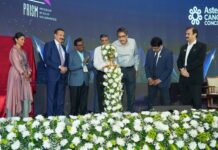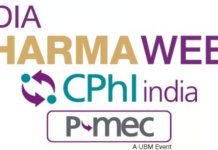Details Key Climate Action Milestones, Alignment With UN Sustainable Development Goals And Position On Biodiversity
Mumbai, February 26, 2017: Monsanto Company today released its 2016 Sustainability Report, Growing Better Together. Highlights include Monsanto’s actions to help mitigate and adapt to climate change through collaborative efforts, the advancement of its biodiversity position and alignment of its work with the United Nations Sustainable Development Goals (SDGs).
“We understand the crucial role agriculture has in feeding the world while utilizing the least amount of resources possible. We are committed to helping farmers grow more food using fewer resources and together, we have made meaningful progress against our goal of advancing modern agriculture,” said Pam Strifler, Vice President, Global Sustainability and Stakeholder Engagement at Monsanto. “Sustainability is firmly embedded in our business and aligned across three broad areas – people, planet and company. As we look back on fiscal year 2016, we take great pride that we’re on track to meet key environmental and social milestones.”
In 2016, Monsanto made significant progress in the company’s multi-pronged approach to achieving a carbon neutral operational footprint by 2021 and in promoting climate-smart agriculture practices:
· Attained 89 percent of its goal to reduce greenhouse gas emissions from crop protection operations by 22 percent (per pound of active ingredient) by 2020.
· Established the Carbon-Neutral Collaborative to help develop a scalable and verifiable carbon accounting framework for the agriculture industry.
· Commissioned and publicly shared a third-party study showing that widespread adoption of recommended climate smart agricultural practices could potentially absorb more carbon than 2.5 billion tree seedlings grown for 10 years, in the U.S. alone.
The 2016 report also outlines how the company’s work contributes to achieving the United Nations’ SDGs, a universal call to action to address the world’s most pressing economic, social and environmental challenges. Recognizing the critical role business must play in advancing this collective global effort, Monsanto reviewed the 17 SDGs and associated 169 targets and identified nine SDGs where it can have the most impact. Three address social and economic topics like poverty, hunger and social opportunity; three focus on environmental issues including climate, water and biodiversity; and three provide frameworks for attaining the other six. These SDGs will continue to inform the company’s sustainability strategy, actions and resource allocation decisions.
In 2016, Monsanto also published its company position on biodiversity, which formalizes its long-standing advocacy for biodiversity and is aligned with the United Nations Convention on Biological Diversity, stating, in part, that the company works to “conserve and promote the sustainable use of biodiversity within species, between species, and of ecosystems as it relates to our research, products and practices.” As part of this advocacy, Monsanto surpassed its 2016 goal of establishing monarch habitats at 70 of its US production and research facilities.
Other highlights from the 2016 report include the following:
– People
o Reached approximately 7 million people with Off-the-Job Safety content through in-person events and social media efforts.
o Maintained an excellent occupational safety record, including an injury severity rate of .53, which represents a 48 percent improvement since 2011.
o Helped 250,000 rural community members in India adopt healthy and hygienic lifestyles as part of Monsanto’s WBCSD Water, Sanitation and Hygiene (WASH) pledge.
– Planet
o Attained 47 percent of goal to increase irrigation water application efficiency across its global seed production operation by 25 percent by 2020.
o Continued working with Conservation International to protect and restore forests with nearly 42,000 acres of forests already impacted in Brazil and Indonesia since 2008.
– Company
o Conducted second annual Supplier Sustainability Assessment to weigh the economic, environmental and social profiles and behaviors of strategic suppliers.
o Implemented formal community engagement plans at 100 percent of manufacturing sites around the globe.
The full Monsanto 2016 Sustainability Report and executive summary is available online here.
Each year, the company publishes a sustainability report that includes its United Nations Global Compact Communication on Progress. This report was prepared in accordance with the Global Reporting Initiative (GRI) G4 voluntary Sustainability Reporting Guidelines.
Corporate Comm India(CCI Newswire)





















